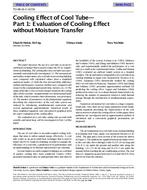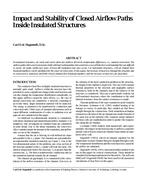Incorporating full spectrum energy efficiency retrofits into average sized commercial buildings requires significant change in assessment and modeling tools. It is necessary to reduce assessment cost and time, and improve ease of use and accuracy of models while reducing economic risk. Existing small and medium sized building energy efficiency retrofits are often problematic because high assessment cost and degree of uncertainty. Market insertion of decision level analytical tools that provide practitioners with user friendly, accurate, verified, and cost effective energy assessments is an essential first step in gaining market acceptance of energy retrofits. Integrated system design for building renovation, similar to the automotive and aerospace system design practice, is conceptually easy for most engineers to understand. In practice, it remains the most challenging effort to achieve improved building energy retrofits. The system performance driven approach to building renovation requires: selecting component technologies, subsystem architectures and dynamically coordinated controls to meet internal and envelope loads while producing a measurably improved indoor environment for a given cost constraint. The systems performance approach requires a change in assessment and modeling tools and equipment selection evaluated with whole building performance metrics rather than component efficiencies. Finally, new integrated hardware and software is not enough to move this complex market. Public policy and even human behavior will need to change, education and workforce transformation must occur and new business models must be developed. This paper focuses on the strategy todeliver these near-term cost effective retrofit solutions to the market.
Citation: ASHRAE Conference Papers, Chicago IL
Product Details
- Published:
- 2012
- Number of Pages:
- 10
- File Size:
- 1 file , 3.1 MB
- Product Code(s):
- D-CH-12-C044


